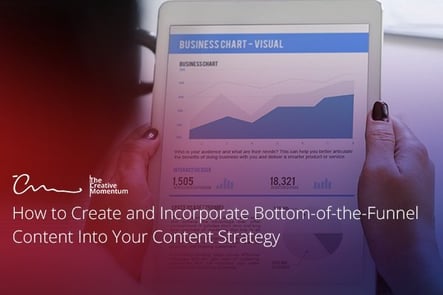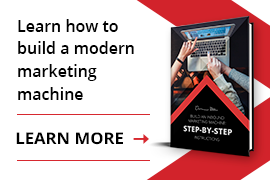 Bottom-of-the-funnel or decision-stage content is the content that brands can use to finally talk about themselves and how they are best positioned to solve the challenges of their buyer. During the decision stage, potential buyers are looking to evaluate and compare specific products or solutions and the companies who provide them. Up until this point in their buyers journey, the prospect wasn’t ready to review this kind of information. And sending decision-stage to prospects before they’re interested will likely get you ignored, or even worse, annoy them!
Bottom-of-the-funnel or decision-stage content is the content that brands can use to finally talk about themselves and how they are best positioned to solve the challenges of their buyer. During the decision stage, potential buyers are looking to evaluate and compare specific products or solutions and the companies who provide them. Up until this point in their buyers journey, the prospect wasn’t ready to review this kind of information. And sending decision-stage to prospects before they’re interested will likely get you ignored, or even worse, annoy them!
Decision-stage content is a vital component of your inbound marketing strategy that shouldn't be overlooked. After all, you’ve worked hard to attract the right kind of website traffic to your site and converted them into leads using helpful content; you may have even nurtured your leads with middle-of-the-funnel or consideration-stage content, moving them further on their path to purchase. It would be a shame to let all that hard work go to waste. Now’s the time to close the sale.
What Kind of Content Should You Use in the Bottom-of-the-Funnel?
The best content for the decision-stage is content that compares your product or service with other solutions in the market. This can be done in a variety of formats, but formats that tend to work best include:
- Case studies - demonstrate the proven ability of your company to solve a problem. There’s a great deal of weight in the social-proof of knowing that someone else has experienced and solved a similar problem.
- Price comparisons or cost calculators - Marcus Sheridan is a huge proponent of making your pricing visible to the market. He tells of how speaking extensively about about fiberglass pool pricing on his pool company website resulted in his site being ranked #1 on Google for over two years and earning him thousands of dollars in sales. Don’t be afraid to be open and honest with your prospects!
- Vendor comparisons - similar in theory to the price comparisons, it’s about being transparent in what your product does compared to the competition, who your product is right for, and just as importantly, who it is NOT right for.
- Product demos - often performed by sales reps, demos are a great way to demonstrate the value of your product or service and you’ve got the added bonus of being able to address the prospect’s specific concerns then and there.
- Free trials - these work great for digital or SaaS products. Let prospects trial your product for a limited time, or offer them a version with limited features.
- Consultations - consultations work especially well with services. Think of it as the demo or free trial equivalent of a physical product. The consultation allows you to give away a sample of your offering in order to prove your expertise and leaves the prospect wanting more.
Decision-Stage Content Considerations
Buyer personas
Don’t forget that as with all of the other content you’ve created as part of your inbound strategy, bottom-of-the-funnel content also needs to focus on a specific buyer persona.You can create several versions of the same piece of content that speaks to each persona differently, or use different formats of the same piece of content that are suitable for the different channels you utilize. For example, if you’re creating a recorded presentation or webinar, you might consider LinkedIn, while detailed product videos might work better on Facebook.In fact, Animoto reported that 64% of consumers say watching a marketing video on Facebook has influenced a purchase decision.
Keywords
Although decision-stage content is often delivered to prospects via email (either through marketing automation workflows or manually from someone in sales), people are searching for this type of content online right before they’re about to purchase - and you definitely don’t want to miss that kind of traffic!
Make sure to optimize your content with keywords that your personas will use when searching. Common bottom-of-the-funnel keyword modifiers include things like:
- Compare or comparison
- Vs. or versus
- Pros and cons
- Benchmark
- Review
- Test
- Price or cost
- Contact, connect, or call
- Purchase or buy
- Order
- Register
- Shop for
- Find
Bottom-of-the-funnel content placement
Don’t save all of your decision-stage content for automated workflows or keep it locked away with your sales team. As I mentioned, prospects (really warm prospects) may indeed be searching for vendor comparisons right before they buy. They’re not going to find the great content you’ve produced if it’s sitting in your sale rep’s email. Place bottom-of-the-funnel content strategically throughout your website. Think about the journey that someone might take on your site. Maybe they first arrive on your website on a blog post, and then end up on a service page. A product demo might be the perfect decision-stage offer that your service page needs to close the sale. You can experiment with various placements, size, etc. on the page itself. Try sidebar, middle of the page highlighted text, bottom of the page image CTA, etc. As the saying goes, effective websites are never truly finished - they’re always a work in progress.

